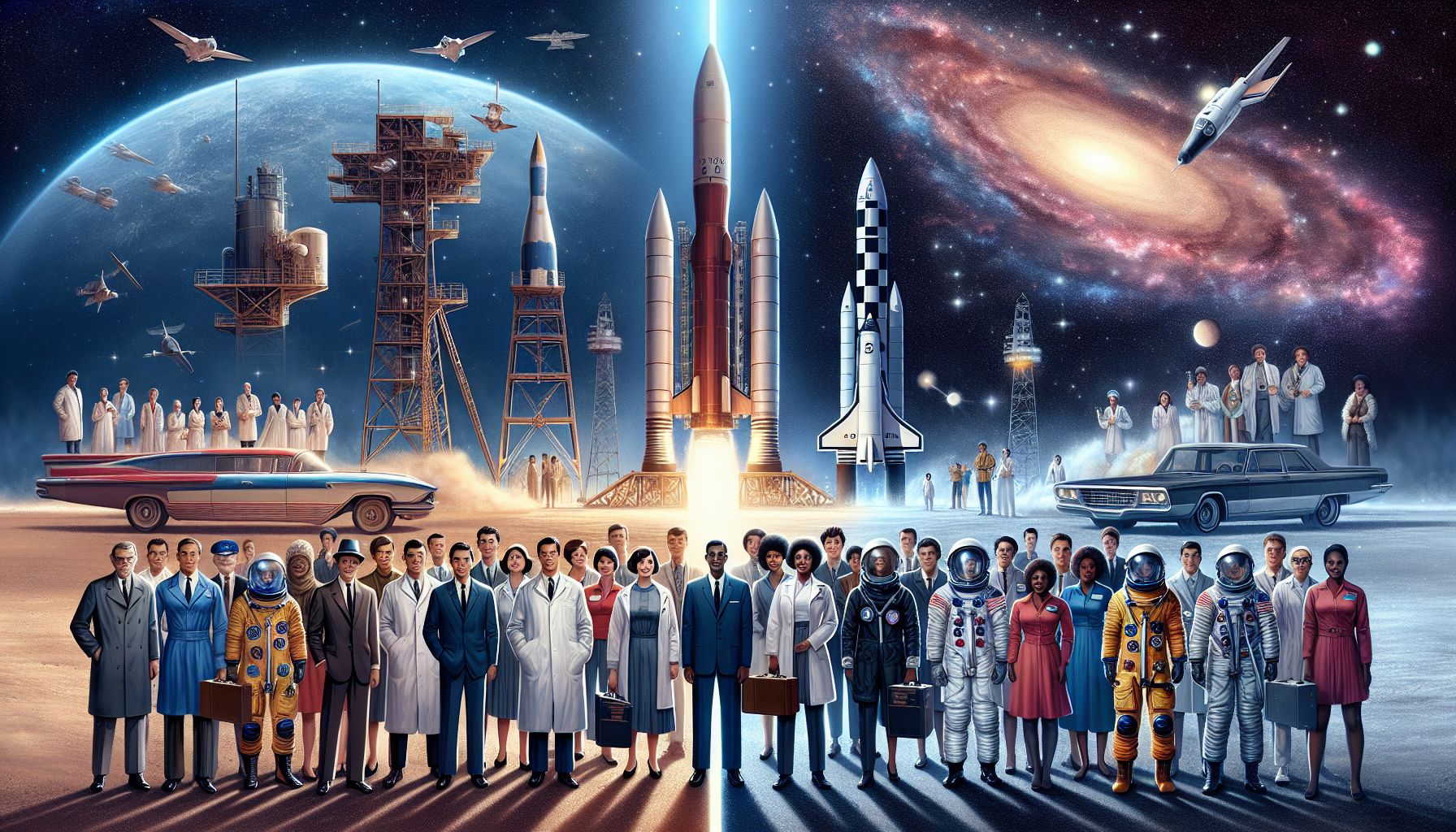📌 Let’s explore the topic in depth and see what insights we can uncover.
⚡ “Think the space race ended with the moon landing? Strap in as we rocket you through a journey from Sputnik to SpaceX, exploring an ever-evolving cosmic rivalry that still shapes our world today!”
In the vast expanse of the cosmos, humanity has always been an explorer. We’ve gazed up at the stars with wonder and curiosity, dreaming of what’s beyond our own planet. The space race, a competition of space exploration between the United States and the Soviet Union during the Cold War, has been a significant part of this cosmic exploration. It was an era of remarkable achievements, intense rivalry, and breathtaking discoveries. Today, the global space race has evolved into a more collaborative, yet competitive endeavor with several nations and private entities participating. This blog post will take you on a journey through the past and present of the global space race, exploring the significant milestones, technological advances, and the changing dynamics. So strap on your space helmets as we blast off into this cosmic adventure!
🚀 The Dawn of the Space Race: A Rivalry Etched in the Stars

"Journeying through Time: The Galactic Marathon"
The space race began in the era of the Cold War, with the United States and the Soviet Union vying for supremacy in space exploration. It was a race not only for scientific exploration but also for demonstrating technological superiority and military prowess. On October 4, 1957, the Soviet Union launched Sputnik 1, the first artificial satellite, marking the beginning of the space race. The United States responded with the launch of its satellite, Explorer 1, in 1958. The rivalry intensified as both nations aimed for more ambitious achievements. In 1961, Yuri Gagarin of the Soviet Union became the first man to orbit Earth, a feat that the United States matched with Alan Shepard later that year. The pinnacle of the space race came in 1969 when the United States’ Apollo 11 mission successfully landed the first humans, Neil Armstrong and Buzz Aldrin, on the moon. This “giant leap for mankind” marked a significant victory for the United States in the space race.
🌌 The Modern Space Race: A Global Pursuit
The modern space race is more global and diversified. It’s not just about superpowers anymore, but involves many nations, private companies, and even individuals. The goals have expanded beyond moon landings to Mars exploration, asteroid mining, and space tourism. China has become a significant player in the space race, landing its Chang’e 4 probe on the far side of the moon in 2019, a first in human history. India, despite having a much smaller budget, has also made significant strides with its Chandrayaan and Mars Orbiter Mission. The private sector has also entered the fray, with companies like SpaceX, Blue Origin, and Virgin Galactic competing to democratize space travel and exploration. SpaceX’s Falcon Heavy launch and the successful reuse of its rockets marked a new era in space exploration.
🛰️ Technological Triumphs and Innovations
Space exploration has led to numerous technological innovations that we use in our daily lives. From satellite technology that provides GPS services and weather forecasting, to solar panels, and even the development of memory foam! Recent advancements in technology have made space exploration more affordable and efficient. Reusable rockets, pioneered by SpaceX, have significantly reduced the cost of space travel. NASA’s Perseverance rover, equipped with the latest technology, is currently exploring Mars, searching for signs of ancient microbial life. Innovations in 3D printing technology are paving the way for potential in-space manufacturing and repairs. Additionally, CubeSats (miniaturized satellites for space research) are providing affordable access to space for many organizations and nations.
👩🚀 The Future of the Space Race: A Unified Journey?
The future of the space race is likely to be a blend of cooperation and competition. International collaborations like the International Space Station (ISS) show the potential for shared scientific pursuits. Yet, the race for resources, such as water on the moon or minerals on asteroids, could intensify competition. Private companies are also likely to play a significant role in shaping the future of space exploration. Space tourism is on the horizon, with companies like Virgin Galactic and Blue Origin offering suborbital flights. SpaceX’s Starship aims for interplanetary travel, with Elon Musk’s ambitious goal of colonizing Mars. The potential discovery of extraterrestrial life, particularly through missions like NASA’s Mars 2020 and ESA’s ExoMars, could redefine our understanding of life and the universe.
🧭 Conclusion
From the Cold War rivalry of the United States and the Soviet Union to the global collaborative and competitive endeavor it is today, the global space race has come a long way. It has been a journey marked by remarkable technological triumphs, inspiring stories, and a shared aspiration to explore the cosmos. The future of the space race holds exciting possibilities. It will continue to be a testament to human curiosity, innovation, and the indomitable spirit of exploration. As we continue this celestial journey, we carry with us a shared hope – not just for new discoveries and advancements, but for a future where space exploration brings us closer together as a species, united in our quest for understanding the universe. So, as we look up at the stars, we realize that the space race is not just about reaching new frontiers, but also about learning more about ourselves and our place in the cosmos. And in that realization, we find the true spirit of the global space race. So, let’s keep exploring, for the sky is not the limit, it’s just the beginning! 🚀
🚀 Curious about the future? Stick around for more discoveries ahead!
